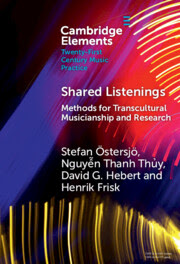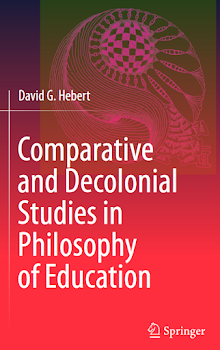UPDATE: This book will soon be published by Springer under the title International Perspectives on Translation, Education and Innovation in Japanese and Korean Societies, Ed., David Hebert (Springer, 2017). Here is a
link to the book’s listing on the Amazon website:
Translation, Education, and Innovation, the 25th anniversary symposium proceedings of
the Nordic Association for Japanese and Korean Studies (NAJAKS) is nearly ready
for publication.
The NAJAKS-2013 organizing committee (Benedicte Irgens, Kristin Rygg, and David Hebert) introduced the conference as follows:
In these times of globalization and digitization, the world has become increasingly complex and interconnected. Communication across borders and languages from around the world is now an immense feature of daily life, and the need for cultural, linguistic and translational competence is ever present. Migration, ethnic conflicts and environmental challenges call for new forms of international understanding and cooperation, as well as a constant focus on quality in education and on accommodating innovation across diverse fields. This is especially true for modernized Asian countries like Japan and Korea, which have a great economic and cultural impact on daily life in Europe that is often underappreciated. There is much to be gained from deeper communication and cooperation with East Asia, acknowledging its rich past, impressive present, and promising future.
In addition to the aforementioned principal themes of translation, education, and innovation, the conference proceedings also point to several additional intersecting themes that join together many chapters: Sustainability, nature, humor, aesthetics, cultural survival and social change, discourse and representation.
As editor of this book, I have been quite
impressed with the quality of research from an array of fields across the
humanities and social sciences, including on such themes as cultural
translation, Japanese and Korean languages, urban development, and traditional
music and arts in East Asia. Although this is a very interdisciplinary book, I should especially mention here that it includes chapters by highly accomplished professors in linguistics-related fields as well as music-related chapters by
ethnomusicologists Keith Howard and Jonathan McCollum.
Link to Nordic Association for Japanese and Korean Studies
(NAJAKS):
Here is a final list of revised chapters included in
the full manuscipt of this book:
Table of Contents
Preface: On NAJAKS in its 25th Year
Acknowledgements and Dedication
Table of Contents
List of Figures and Tables
Profiles of Contributing Authors
INTRODUCTION: Translation, Education, and Innovation in Japanese and Korean Societies (David G. Hebert)
Part 1: Keynotes on Cultural Change
Chapter 1. From Shizen to Nature: A Process of Cultural Translation (Nanyan Guo)
Chapter 2. Life and Death of Music as East Asian Intangible Cultural Heritage (Keith Howard)
Part 2: Translational Issues in Literature
Chapter 3. Translating Scientific Discourse in Ariyoshi Sawako’s Fukugo Osen (Barbara Hartley)
Chapter 4. Foreigner Talk or Foreignness: The Language of Westerners in Japanese Fiction (Erik Oskarsson)
Chapter 5. Emotional Discourse Analysis of Japanese Literary Translations (Alexandra Holoborodko)
Part 3: Analyses of Korean and Japanese Languages
Chapter 6. Definiteness in Korean: A Contrastive Study of Korean and Italian (Imsuk Jung)
Chapter 7. Unmarked Plurality and Specificity in Korean and Japanese Plural Nouns: A Preliminary Study (Kiri Lee, Young-mee Yu Cho, and Min-Young Park)
Chapter 8. The “My Funny Talk” Corpus and Speaking Style Variation in Japanese (Toshiyuki Sadanobu)
Chapter 9. Kansai Style Conversation and its Role in Contemporary Japan (Goran Vaage)
Part 4: Language Education
Chapter 10. On the Teaching of Japanese Epistemic and Evidential Markers: Theoretical Considerations and Practical Applications (Lars Larm)
Chapter 11. Analysis of Kanji Reading and Writing Errors of Swedish Learners in Comparison with Level-matched L1 Learners (Fusae Ivarsson)
Part 5: Innovation in the Professions
Chapter 12. The Interdisciplinary Study of Law and Language: Forensic Linguistics in Japan (Mami Hiraike Okawara)
Chapter 13. Linguistic Study of Court Interpreting in Lay Judge Trials in Japan (Makiko Mizuno)
Chapter 14. “Green” and “Smart” Cities Diffusion: The Case of Songdo, Korea (Alexandra Lichá)
Part 6: The Arts in Innovative Societies
Chapter 15. Bad Father and Good Mother: Changing Masculinity in Post-Bubble-Economy Japan (Shuk-ting Kinnia Yau)
Chapter 16. Embodying History and Pedagogy: A Personal Journal into the Dokyoku Style of Japanese Shakuhachi (Jonathan McCollum)
Chapter 17. Animals and Aesthetics in Japanese Art and Society (Mika Merviö)
Chapter 18. In Defense of Rules or Creative Innovation?: A Discussion on the Essence of the Topic Spring Rain in Japanese Haiku (Herbert Jonsson)
Chapter 19. Cultural Translation and Musical Innovation: A Theoretical Model with Examples from Japan (David Hebert)
CONCLUSION: Cultural Translation and Social Change in East Asia (David Hebert)

























No comments:
Post a Comment